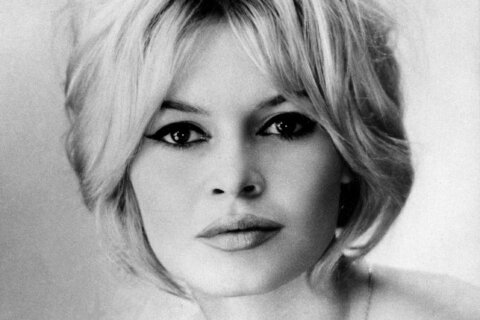Birds do it, bees do it
Even educated fleas do it
Let’s do it, let’s fall in love
– Cole Porter’s “Let’s Do It”
Yes, all animals do it, including porcupines, which is how this little porcupette came to be.
Correspondent Rita Braver said, “I keep thinking of that old joke, you know, how do porcupines make love? Very carefully!”
“Very carefully, indeed!” said Kenton Kerns, a curator at the Small Mammal House at the Smithsonian’s National Zoo. “The male sometimes shows up with quills in him the next day.”
Kerns says this little guy, who hasn’t been named yet, was no accident. When mom Beatrix needed a mate, potential dad Quilber was shipped in from another zoo.
Braver asked, “Quilber was brought here just for the express purpose of hooking up with Beatrix?”
“Exactly,” said Kerns. “He had a good genetic match with Beatrix. He met with Beatrix, we did introductions, went very well.”
So did the intro of the two-toed sloths Vlad and Athena.
Braver asked, “I noticed when they were moving around here, she seemed to be the one going after him rather than vice versa. Is that typical animal behavior?”
“I think it probably depends on the sloth and the pairing,” Kenton replied. “In this couple, yes, Athena always seeks out Vlad, and we’ve seen attempts to breed.”
“They seemed to kiss each other – is that possible?”
“We call it a kiss. We don’t really know what’s going on. We see them do that tongue interaction. We don’t know if it’s a greeting, if it’s affectionate, or if it’s something completely different.”
The zoo is hoping this pair will produce a healthy baby sloth. In fact, Athena was transferred here from a zoo in Texas, for just that reason: “There’s a whole equation behind who’s the best match for who, and we sort of match them up, like an app for dating,” said Kerns.
That’s right: a dating app for animals, like these endangered African Penguins hatching eggs at the Mystic Aquarium in Connecticut.
In order to reduce in-breeding, zoos and aquariums all over North America have amassed years of detailed records about animal offspring. That data is fed into special software developed by Chicago’s Lincoln Park Zoo, and used to create species survival plans, to show which animals can safely mate:
Mystic Aquarium’s Gayle Sirpenski, coordinator of the African Penguin survival plan, said, “The better we do at these breeding recommendations, and the more gene diversity we retain, the longer these species will be around in our zoos and aquariums.”
Of course, as with any dating app, it’s not just what the algorithm says.
Braver asked assistant penguin supervisor Josh Davis, “Do you think there’s such a thing as animal magnetism, that the animals have to get attracted to each other?”
“I do think so, and especially with this species, because they’re more so of a romantic species,” he replied.
And just like humans, Davis said, new penguin couples need some “alone time”: “Does it work better if we put on some Barry White and leave the room? Maybe!”
Braver asked, “Do you ever have situations where you put two penguins together and they just don’t take?”
“Yeah, I’ve heard of facilities that have had that,” said Davis. “Sometimes it just takes a little bit longer. But part of setting them up for success is knowing how old those penguins are; are they at that point in their lives where they’re gonna be looking for a mate?”
And that brings us to this back to the National Zoo, and to a family of tiny monkeys known as golden headed lion tamarins, complete with a new set of twins. Curator Kenton Kerns said it all came about because the zoo used the dating app to find a mate for its shy, withdrawn male, Coco.
“Once Lola came into the picture, he was a completely different monkey,” Kerns said. ” ‘Cause she would go first and explore, and he would start to follow. Now, he’s all over the exhibit just like she is. He’s still a little nervous, but nothing like how he was when he was alone.”
“So, he found his valentine?” asked Braver.
“Absolutely!”







